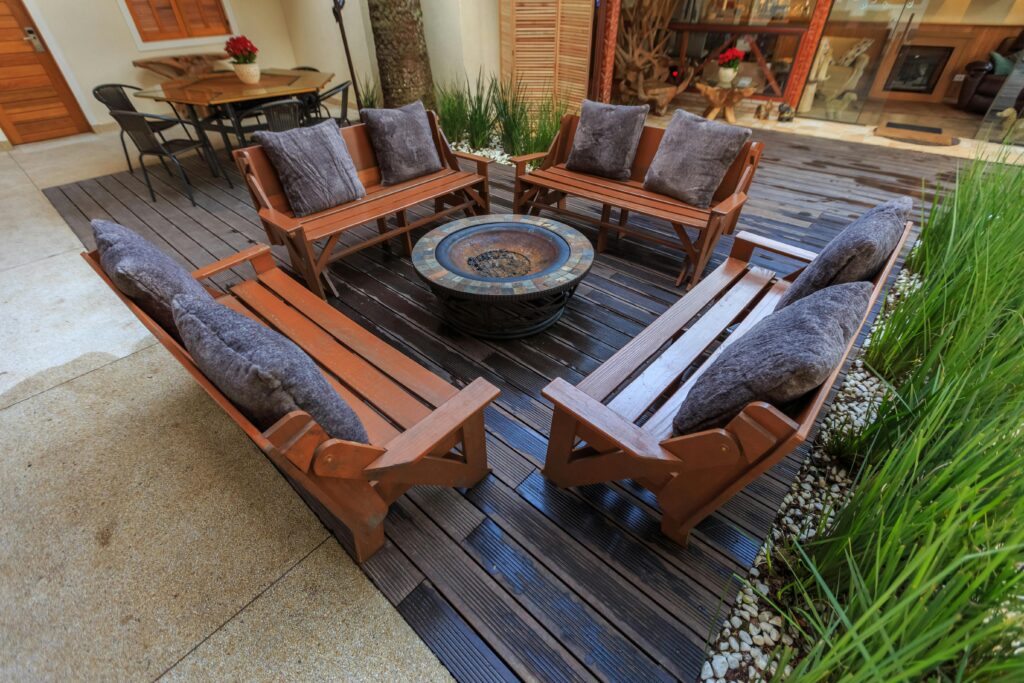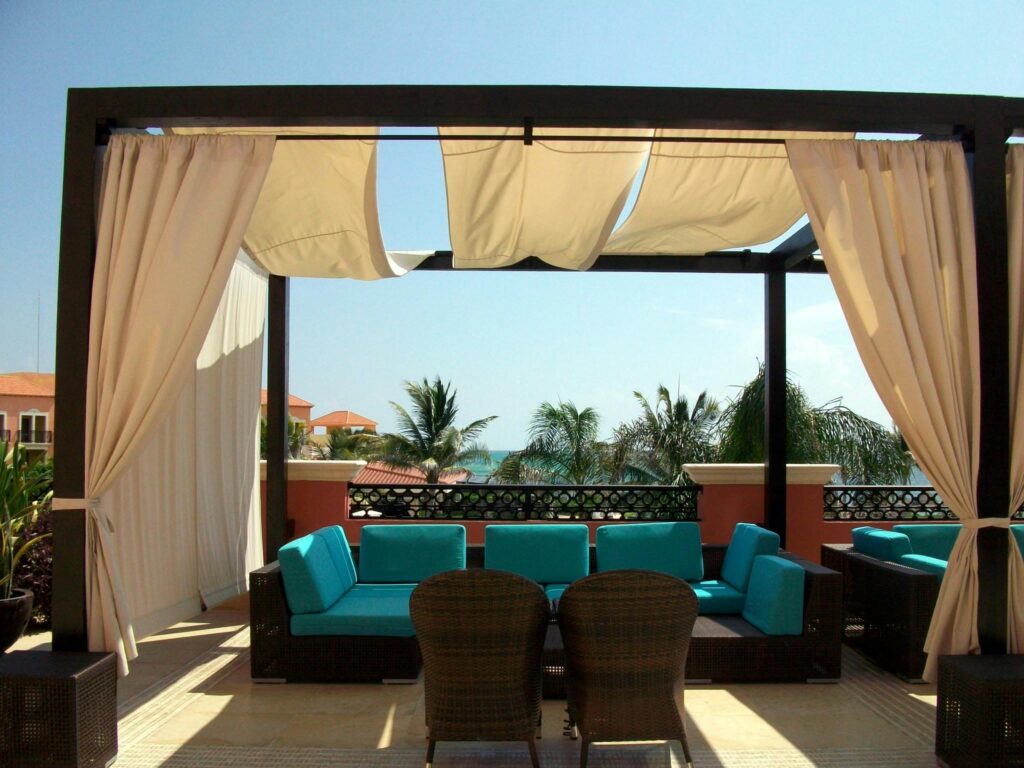Picture this: it’s a warm summer evening, the sun is setting, and you’re sipping on your favorite drink while enjoying the fresh air in your outdoor space. But as you look down at the worn-out flooring beneath your feet, you can’t help but think it’s time for a change. If you’re in the market for a terrace makeover, you’ve come to the right place. In this article, we’ll explore the different types of flooring options available for your terrace, from classic wooden decks to low-maintenance composite materials. By the end of this read, you’ll have all the information you need to choose the perfect flooring that suits your style, budget, and maintenance preferences. So, let’s dive in and get your terrace one step closer to becoming the outdoor oasis of your dreams.
Table of Contents
ToggleImportance of Choosing the Right Flooring for Your Terrace
The flooring of your terrace is a crucial element that can significantly impact the overall aesthetics, functionality, and durability of the outdoor space. Selecting the appropriate type of flooring can enhance the beauty of your terrace, create a comfortable outdoor living area, and increase the value of your property.
According to a study conducted by the National Association of Home Builders, outdoor living spaces such as terraces and patios are among the top features that potential homebuyers look for when purchasing a property. In fact, homes with well-designed outdoor spaces tend to sell for a higher price and attract more potential buyers.
Choosing the right type of flooring for your terrace can also improve the usability of the space. For example, selecting a non-slip and weather-resistant flooring material can create a safe environment for your family and guests to enjoy outdoor gatherings without the risk of accidents. Additionally, durable flooring options can withstand the outdoor elements and require less maintenance over time, saving you time and money on repairs and replacements.
One successful example of the impact of choosing the right flooring for a terrace is the renovation project of a luxury rooftop terrace in a bustling city. By selecting high-quality, aesthetically pleasing flooring materials that complemented the modern design of the space, the property owners were able to transform the rooftop terrace into a stylish and functional outdoor oasis. This not only enhanced their own living experience but also increased the property’s value, attracting potential buyers who were willing to pay a premium for such a coveted outdoor living space.
In conclusion, understanding the importance of choosing the right flooring for your terrace is essential for creating a visually appealing, functional, and valuable outdoor space. By investing in high-quality flooring materials that meet your design preferences and practical needs, you can transform your terrace into a desirable and enjoyable extension of your home.
How to Choose the Right Flooring for Your Terrace
Content:
When it comes to selecting the perfect flooring for your terrace, it’s important to consider several key factors to ensure both style and functionality. Follow these steps to make the best choice for your outdoor space:
1. Assess Your Needs: Take into account the specific requirements of your terrace, such as weather conditions, foot traffic, and desired aesthetics. Determine if you need a durable option for high-traffic areas or a more decorative choice for a cozy atmosphere.
2. Research Flooring Options: Explore the different types of flooring materials available for outdoor spaces, including wood, composite decking, porcelain tiles, natural stone, and concrete. Consider their durability, maintenance requirements, and aesthetic appeal to narrow down your options.
3. Set a Budget: Determine how much you are willing to invest in your terrace flooring project. Keep in mind that some materials may have a higher upfront cost but require less maintenance in the long run, saving you money over time.
4. Seek Professional Advice: Consult with a flooring specialist or contractor to get expert recommendations based on your specific needs and budget. They can provide valuable insights and help you make an informed decision that aligns with your vision for your terrace.
5. Make a Decision: Once you have gathered all the necessary information and weighed the pros and cons of each flooring option, it’s time to make a decision. Choose the flooring material that best meets your requirements and enhances the overall look and feel of your terrace.
By following these steps, you can confidently select the right flooring for your terrace that combines practicality and style to create a welcoming outdoor space for relaxation and entertainment.

Types of flooring for my terrace
✅ Consider your climate: Choose a flooring material that can withstand your local weather conditions, whether it’s rain, snow, or intense sun exposure.
❌ Avoid slippery materials: Stay away from flooring options that can become slippery when wet to prevent accidents and ensure safety on your terrace.
💡 Extra tip: If you want a low-maintenance option, consider composite decking as it is durable and doesn’t require staining or sealing.
Concepts Key
When it comes to choosing the right flooring for your terrace, understanding the various types of floors available can make all the difference in creating a functional and aesthetic outdoor space. Let’s delve into some key concepts related to different types of flooring options for your terrace:
1. Porcelain Tiles: Porcelain tiles are a popular choice for terrace flooring due to their durability and versatility. These tiles are made from refined clay and other natural materials, making them resistant to water, frost, and temperature changes. They come in a wide range of colors, textures, and patterns, allowing you to create a customized look for your terrace.
2. Wood Decking: Wood decking gives a warm and natural look to your terrace, creating a cozy and inviting outdoor space. Hardwood decking, such as teak or mahogany, is known for its durability and resistance to rot and decay. However, it requires regular maintenance to preserve its appearance and quality.
3. Composite Decking: Composite decking is a modern alternative to wood, made from a combination of wood fibers and recycled plastic. It offers the natural look of wood with the low maintenance and durability of plastic. Composite decking is resistant to fading, staining, and scratching, making it an ideal choice for terraces.
4. Stone Pavers: Stone pavers, such as slate, limestone, or travertine, add a luxurious and elegant touch to your terrace. These natural stones come in various shapes and sizes, allowing you to create unique patterns and designs. Stone pavers are durable, slip-resistant, and easy to maintain, making them a timeless choice for outdoor flooring.
5. Concrete: Concrete is a versatile and cost-effective option for terrace flooring. It can be stamped, stained, or polished to create different finishes and textures. Concrete is durable, easy to clean, and can withstand harsh weather conditions. It is a practical choice for modern and minimalist terrace designs.
6. Rubber Flooring: Rubber flooring is a non-slip and cushioned option for terraces, especially for high-traffic areas or places where children play. It comes in a variety of colors and thicknesses, providing comfort and safety for outdoor activities. Rubber flooring is easy to install, maintain, and replace if needed.
By familiarizing yourself with these key concepts related to different types of terrace flooring, you can make an informed decision that suits your style, budget, and maintenance preferences. Each flooring option has its unique characteristics and benefits, so consider your specific needs and preferences before selecting the perfect flooring for your terrace.
FAQs – Types of Floors for My Terrace
❓ What are the most common types of floors for a terrace?
The most common types of floors for a terrace are porcelain tiles, natural stone, wooden decking, and concrete pavers.
❓ How do I choose the right type of floor for my terrace?
When choosing the right type of floor for your terrace, consider factors such as the climate of your area, the amount of maintenance you are willing to do, the aesthetic you want to achieve, and your budget.
❓ Are wooden floors a good option for terraces?
Wooden floors can be a great option for terraces as they add a natural and warm look to the outdoor space. However, they require more maintenance compared to other types of floors.
❓ Can I install porcelain tiles on my terrace myself?
While it is possible to install porcelain tiles on your terrace yourself, it is recommended to hire a professional to ensure proper installation and avoid any issues in the future.
❓ How can I protect my terrace floor from weather damage?
To protect your terrace floor from weather damage, consider using weather-resistant sealants, regular cleaning and maintenance, and placing rugs or mats in high-traffic areas.



One Response